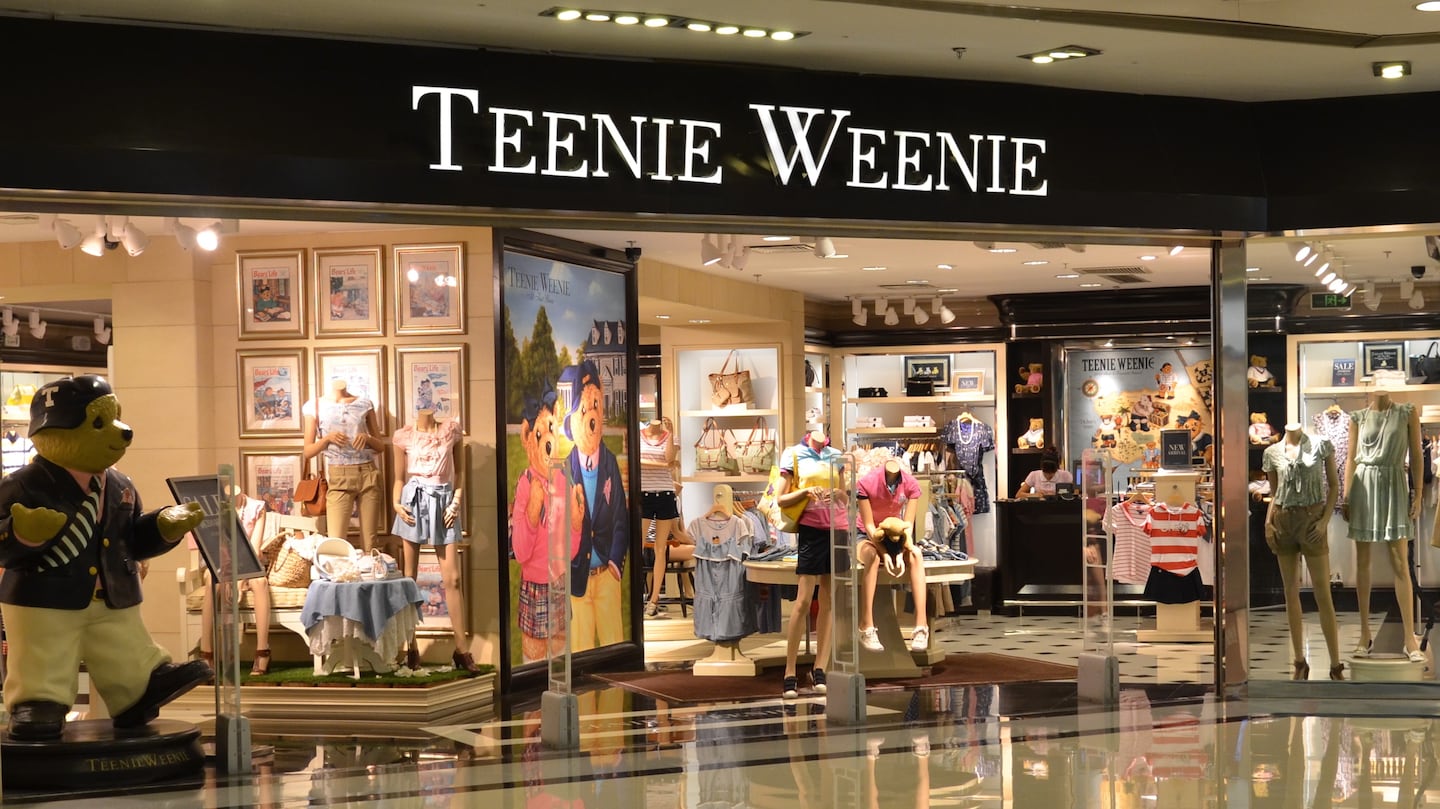
The Business of Fashion
Agenda-setting intelligence, analysis and advice for the global fashion community.

Agenda-setting intelligence, analysis and advice for the global fashion community.

NANJING, China — Nanjing dressmaker V-Grass Fashion Co. has an audacious plan to become the Valentino of the Chinese fashion world, and buying a South Korean fast-fashion brand with more than six times as many stores in China is part of its move to get there.
V-Grass agreed this month to acquire the Chinese business of E-Land Group’s Teenie Weenie in a deal valued at about $900 million. For V-Grass, which is planning its first overseas store in Milan, the purchase will help support falling sales and profit as the Shanghai-listed retailer shuts a third of its lower-end outlets sand restructures to focus on the luxury-minded, according to vice president Tao Weimin.
“We wanted to find a brand to prop up our performance so we can build up what we want to do with the V-Grass label,” Tao said in an interview in Nanjing, capital of eastern Jiangsu province. “As a listed company, the market will react badly if we take too long to show profit from the restructuring. This acquisition will let us be bolder.”
Teenie Weenie, whose casual-wear items are embossed with cutesy teddy bears, has 1,400 stores in China, compared with about 215 for V-Grass, which is trying to capture Chinese middle-class consumers who are increasingly willing to pay more for premium products. Further consolidation is likely, Tao said.
ADVERTISEMENT
More Acquisitions
“After we digest Teenie Weenie, we will look to acquire other high-end foreign fashion brands,” said Tao. “We think this is now a period of consolidation and adjustment in our industry and that a dominant local fashion apparel company can emerge. Our goal is to be that company.”
In China’s competitive apparel market, the top two companies — Heilan Home Co. and Fast Retailing Co.’s Uniqlo brand — had 1.2 percent and 1 percent market share respectively in 2015, according to researcher Euromonitor International.
“The apparel space here needs to consolidate, and the winners going forward are companies with the right systems in place, such as inventory management, the right locations,” said Ben Cavender, a China Market Research Group analyst. “Teenie Weenie is in a good position as it targets the younger casual fashion consumer base.”
Shutting Stores
In the past year, V-Grass has shut a third of its boutiques located in third and fourth-tier Chinese cities, and in lower-end malls in bigger cities, Tao said. While those outlets had been profitable, the company wants to presence to establish itself in high-end locations in the biggest cities, he said.
V-Grass, whose own dresses retail for about 3,000 yuan ($450), plans to invest in boosting Teenie Weenie’s fashion line for women, which has been losing market share, Tao said. The Korean brand is doing well in menswear, children’s clothing and accessories, where sales in those categories in China are growing 20 percent to 30 percent a year, he added.
The Korean brand had net income of more than 500 million yuan in China last year on 2 billion yuan of sales, he said, compared with V-Grass’s 112 million yuan profit and 814 million yuan in revenue.
ADVERTISEMENT
Milan Boutique
V-Grass’s own core operations have positive cash flow and did not need a capital infusion, Tao said. The company plans to open its first overseas V-Grass boutique in Milan, hometown of Italian fashion house Valentino, early next year, he said.
To reinvent the company and instill a sense of cultural heritage, V-Grass in July 2015 also acquired for 135 million yuan the Nanjing Brocade Research Institute, which produces an intricately weaved silk fabric traditionally worn only by Chinese royalty, according to Tao.
“We envision ourselves as a luxury fashion company incorporating traditional Chinese cultural elements,” he said.
By Rachel Chang; editors: K. Oanh Ha and Daryl Loo.
As the German sportswear giant taps surging demand for its Samba and Gazelle sneakers, it’s also taking steps to spread its bets ahead of peak interest.
A profitable, multi-trillion dollar fashion industry populated with brands that generate minimal economic and environmental waste is within our reach, argues Lawrence Lenihan.
RFID technology has made self-checkout far more efficient than traditional scanning kiosks at retailers like Zara and Uniqlo, but the industry at large hesitates to fully embrace the innovation over concerns of theft and customer engagement.
The company has continued to struggle with growing “at scale” and issued a warning in February that revenue may not start increasing again until the fourth quarter.